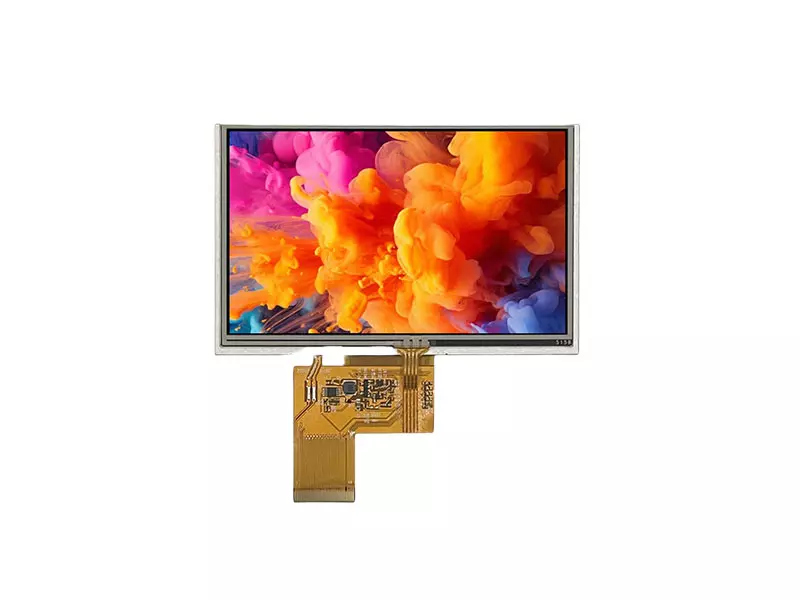Enhancing User Experience: Customizing TFT Screens for PDAs
Jun 09,2025
Customizing TFT screens for PDAs involves tailoring the display according to the unique requirements of the user or application. This customization can enhance visibility, usability, and overall user experience, making it a crucial consideration for any technology developer or engineer in the electrical and LED display industry.
TFT (Thin Film Transistor) technology is known for its superior image
Customizing TFT screens for PDAs involves tailoring the display according to the unique requirements of the user or application. This customization can enhance visibility, usability, and overall user experience, making it a crucial consideration for any technology developer or engineer in the electrical and LED display industry.
TFT (Thin Film Transistor) technology is known for its superior image quality, faster response times, and lower power consumption compared to other display technologies. When customized for PDAs, these screens can provide various benefits, such as improved color accuracy, enhanced contrast ratios, and adaptable viewing angles. These features are essential for professionals who rely on PDAs for tasks requiring precision and clarity.
One of the primary advantages of customizing TFT screens is the ability to select the appropriate resolution and screen size. Depending on the application, a higher resolution may be necessary for detailed graphical presentations or applications with intricate user interfaces. Conversely, a smaller, more portable screen may be ideal for basic data handling and communication tasks. Understanding the specific application requirements helps in determining the optimal specifications for the TFT display.
Another crucial aspect of customization is touch sensitivity. Many PDAs now integrate touch functionality to improve user interaction. Customizing the touch sensitivity levels ensures that the device responds accurately and swiftly to user commands. This can significantly enhance productivity, especially in high-demand environments where efficiency is key.
Moreover, environmental considerations play a vital role in TFT customization for PDAs. Depending on the intended use, screens may need to be designed to withstand extreme temperatures, humidity, or exposure to dust and water. Selecting appropriate materials and coatings can enhance durability and longevity, ensuring the device remains functional under various conditions.
When embarking on the customization process, it’s essential to collaborate closely with display manufacturers and engineers. This partnership can facilitate the selection of the right components, including backlight options and display drivers, that align with the desired specifications. Additionally, prototyping the customized TFT screen can help identify any potential issues before full-scale production, ensuring that the final product meets the expected standards.
In conclusion, customizing TFT screens for PDAs presents a valuable opportunity to enhance device functionality and user experience. By focusing on resolution, touch sensitivity, and environmental resilience, professionals in the electrical and LED display sectors can create tailored solutions that meet the unique needs of their clients. As technology continues to advance, the importance of such customizations will only grow, making it essential for businesses to remain informed and adaptable in this competitive landscape.
TFT (Thin Film Transistor) technology is known for its superior image quality, faster response times, and lower power consumption compared to other display technologies. When customized for PDAs, these screens can provide various benefits, such as improved color accuracy, enhanced contrast ratios, and adaptable viewing angles. These features are essential for professionals who rely on PDAs for tasks requiring precision and clarity.
One of the primary advantages of customizing TFT screens is the ability to select the appropriate resolution and screen size. Depending on the application, a higher resolution may be necessary for detailed graphical presentations or applications with intricate user interfaces. Conversely, a smaller, more portable screen may be ideal for basic data handling and communication tasks. Understanding the specific application requirements helps in determining the optimal specifications for the TFT display.
Another crucial aspect of customization is touch sensitivity. Many PDAs now integrate touch functionality to improve user interaction. Customizing the touch sensitivity levels ensures that the device responds accurately and swiftly to user commands. This can significantly enhance productivity, especially in high-demand environments where efficiency is key.
Moreover, environmental considerations play a vital role in TFT customization for PDAs. Depending on the intended use, screens may need to be designed to withstand extreme temperatures, humidity, or exposure to dust and water. Selecting appropriate materials and coatings can enhance durability and longevity, ensuring the device remains functional under various conditions.
When embarking on the customization process, it’s essential to collaborate closely with display manufacturers and engineers. This partnership can facilitate the selection of the right components, including backlight options and display drivers, that align with the desired specifications. Additionally, prototyping the customized TFT screen can help identify any potential issues before full-scale production, ensuring that the final product meets the expected standards.
In conclusion, customizing TFT screens for PDAs presents a valuable opportunity to enhance device functionality and user experience. By focusing on resolution, touch sensitivity, and environmental resilience, professionals in the electrical and LED display sectors can create tailored solutions that meet the unique needs of their clients. As technology continues to advance, the importance of such customizations will only grow, making it essential for businesses to remain informed and adaptable in this competitive landscape.
Key words:
Recommended
Enhancing User Experience: Customizing TFT Screens for PDAs
Customizing TFT screens for PDAs involves tailoring the display according to the unique requirements of the user or application. This customization can enhance visibility, usability, and overall user experience, making it a crucial consideration for any technology developer or engineer in the electrical and LED display industry.
TFT (Thin Film Transistor) technology is known for its superior image





